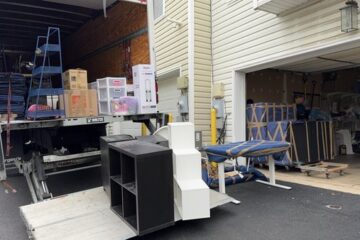Cabling Confidence: A Comprehensive Guide to Choosing the Right Fiber Optic Cable for Your Network

It may appear simple to figure out what equipment you’ll need when adding fiber optic connection to your Ethernet network. You measure the length of your fiber line and choose a fiber optic network cable company. To make sure the system works, you must take into account a number of underlying factors, however, including:
The two types of fiber modes are single mode and multimode, which refer to different fiber core diameters.
Fiber launch power: the transmitter’s power output. In dB, launch power is expressed.
The range at which the receiver can reliably interpret light pulses originating from the transmitter is known as the receive sensitivity. Additionally, receive sensitivity is expressed in dB.
Attenuation of fiber cables: the loss experienced along the course of the fiber cable run. expressed in dB as well.
The discrepancy between the transmitter launch power and the receiver receive sensitivity is known as the fiber budget. The fiber budget shows the amount of loss that, if it is surpassed, will result in a breakdown in communication.
Data centre administrators now always use fiber optic cable for a wide range of applications. Numerous factors contribute to this, including developments in cable technology that make it an even better option. To make sure fiber optic cable is the appropriate choice for the job, there are a few factors to take into account. These are the top seven most significant ones.
- Distance
The loss factor of fiber optic cable is one of its main benefits: over a 100-meter distance, fiber loses about 3% of its data, whereas copper connections, suffer much larger losses. While fiber optic cable has a greater benefit over copper when the connection has to be longer, copper may still be a wonderful option for shorter distances.
Therefore, the distance the data must travel should be the primary consideration when selecting fiber optic cable.
- Interference
Fiber is completely immune to interference from a wide range of sources, including lightning strikes, power lines, and even intentional stumbling and disturbance. Therefore, the second factor to examine is where the data may move, after the need of how far the data must travel. In data centres, there may be interference sources in or close to the cable route, regardless of whether the cables are handled by running above or—less frequently—by running through underfloor areas.
This also holds true at edge data centres, where components are closer together and more compact. This is also true for modular data centres, and you can guarantee that you can grow simply and rapidly when required by using the appropriate fiber line. This is much more crucial when we approach collocation and hyperscaling.
- The Bandwidth
The capacity of your connections to carry bandwidth is a major factor in data centres being ready for the future. For example, data centres are getting ready for more 5G traffic as well as traffic from VR and AR applications, as seen by the surge in the usage of OM5 cables over OM3/4, particularly in new buildings.
This is particularly important for Edge data centres in order to be ready for the upcoming 400G needs. As the COVID-19 outbreak has shown, even smaller domestic data centres will see an increase in traffic as “work from home” and “work from anywhere” become the norm. It seems that an increasing number of businesses are embracing hybrid workforces, relocating their corporate offices from more costly city centre locations, and even permitting partly or completely remote workforces.
Speed and bandwidth are more crucial than ever when you take into account the rise in “shopping from home” and the use of several streaming devices.
- Security
It should come as no surprise that security is one of the most important concerns for any data centre. In the event that the personal information of thousands of customers is compromised, a single breach has the ability to take an entire company out of business and create significant issues. In spite of the fact that the bulk of security problems are connected to software and human mistake (such as password cracking), physical hardware still provides a certain amount of risk.
When it comes to protecting your data centre and the digital assets it contains, choosing the right cable from the reliable fiber optic cabling service for the task at hand might be the difference between a potentially costly data breach and the protection of your data collection and storage facilities.
- Dimensions of the Cable
As a result of the development of tiny fiber cables that are just as capable of transporting data as their larger counterparts, fiber may now be used in almost any setting. These smaller cables are not only simple to bend and route, but they also save space in the cable management systems inside your organization.
One further potential method for reducing expenses is the use of thinner cables, which provide more airflow and enhanced cooling capabilities. Additionally, fiber cables may be easily bundled, organized, and labelled, which simplifies the process of avoiding the spaghetti tangle that often develops at the rear of server racks. It goes without saying that if you have a more robust cable management system in place, it could also assist you in preventing this.
To put it simply, you should take into consideration fiber optic cabling service the size of the cable that you are using at each site and then weigh that against other factors such as bandwidth, interference, and distance.
Conclusion
By selecting the cable diameter with great care, it is possible to improve some aspects of a network, like its flexibility, space consumption, and ventilation. By adhering to the required bend radius, you can ensure that your cables remain in excellent shape and save yourself from experiencing signal deterioration and damage. For efficient network installation, it is important to make use of equipment for cable management, to inspect cables on a regular basis, and to review the documentation provided by the manufacturer. When it comes to handling cables in a manner that is both proper and in compliance with rules, installers and maintenance staff should get training.
Leave a reply
You must be logged in to post a comment.











